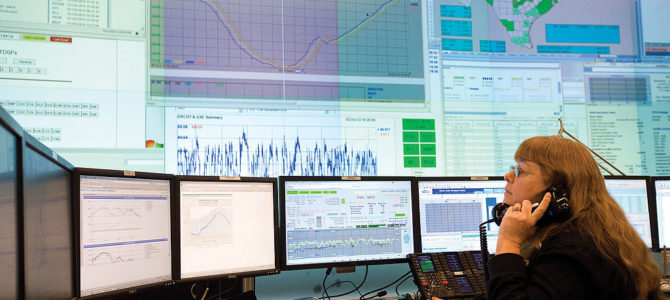
When the lights went out in Texas earlier this year, corporate media and the left swiftly developed a narrative and stuck to it: Texas failed because it didn’t regulate enough and it wasn’t part of the national grid.
This storyline also claimed a lack of electricity from wind and solar had nothing to do with the disaster that claimed 111 lives. Instead, the blackouts were the failure of normally reliable thermal power—natural gas, coal, and nuclear—due to a reluctance to spend billions of dollars to winterize facilities throughout a state more known for persistently hot summers than for transient polar vortices.
A variant of this liberal argument was posited by Pedro Gonzalez at American Greatness. The headline echoed the corporate media’s main gloat over Texas’s misfortune: “When the Free Market Freezes Over.” Unfortunately, Gonzalez, as with leftist media and the environmentalists he draws upon, make a few assertions that turn out to be not quite so.
Correcting the record is important since assigning the wrong reasons for Texas’s electric blackouts will lead to the wrong solutions.
How Much to Blame Wind
Gonzalez starts with the observation that at the root of Texas’s failure is “an indictment of a bought, unresponsive, ruling class.” This is likely his essay’s most correct statement, although not quite in the way he thinks. Gonzalez then repeats the oft-claimed charge that the blackouts were driven by thermal power failures with “wind shutdowns account(ing) for less than 13 percent of the outages.”
It is true that natural gas production in Texas, much of it in the Permian Basin in the west, dropped by about 75 percent soon after the cold front hit. Unfortunately, a cloud of disinformation peddled by the unreliables lobby (for wind and solar) and corporate media fed a false narrative that the failures were due solely to a lack of weatherization.
The reason for the drop in natural gas available for power generation is complicated, but a partial picture of what happened emerged from some 50 hours of sworn testimony before both houses of the Texas legislature on Feb. 25 and 26. Those hearings indicated there may have been some loss of gas supply due to wellhead freeze-offs and cold pipeline problems.
But unmentioned by critics was that ERCOT (Electric Reliability Council of Texas) and Oncor, the Texas grid operator and one of its two large regulated electric transmission and distribution providers, respectively, inexplicably decided to cut power to the oil and gas fields, compressors, and pipeline infrastructure responsible for fueling the gas-fired power plants that were laboring mightily to keep the lights and heat on in Texas. Thus, human error played a role.
Additional natural-gas supplies were diverted to home heating needs during the record cold. Gas supply ramped up commensurate with electricity provided to the gas production infrastructure. The loss of power to oil and gas infrastructure was also made worse by an Obama administration environmental edict that forced the oil and gas industry to replace natural gas pipeline compressors powered by natural gas with electric compressors.
That regulated industries and the regulators who oversee them—ERCOT and the Public Utilities Commission of Texas (PUC)—failed to recognize the critical nature of Texas natural gas infrastructure was hardly a failure of the free market, as Gonzalez and the left allege. It was a failure of government regulators.
The Failures Accumulated Into One Big Storm
Gonzalez quotes me: “Chuck DeVore, vice president of the Texas Public Policy Foundation, took a similar line as Abbott. ‘Blackouts are a feature of the push to have more unreliable renewables on the grid,’ he tweeted, adding that energy subsidies are bad, too.”
Gonzalez quotes from ERCOT, the very grid operator responsible for much of Texas’s disaster, noting that, “wind shutdowns accounted for less than 13 percent of the outages. ‘It appears that a lot of the generation that has gone offline today has been primarily due to issues on the natural gas system…’” But focusing on the days of the power outage is a strawman. Texas’s energy history didn’t start with February’s blackouts. Rather, it is the culmination of 20 years of bad policy.
It’s true that of 31,000 megawatts of installed mostly wind and some solar capacity in Texas, only about 300 megawatts were producing at a critical time during the storm. It’s also true that not much was expected from the unreliables—they generally don’t do well in adverse conditions.
Yes, some 16,000 megawatts of thermal (gas, coal, and nuclear) went offline early morning on Feb. 15, with another 14,000 megawatts offline due to maintenance to prepare for Texas’s long, hot summer. But the focus on what happened just after 1 a.m. on Feb. 15 misses how we got to this point over decades.
Texas Has Substituted Unreliable for Reliable Backups
In the last five years alone, Texas added some 20,000 megawatts of installed capacity of wind and solar while losing a net of 4,000 megawatts of coal and natural gas. This fact alone meant that had every thermal plant operated flawlessly during the height of the polar vortex, Texas still would have been short some 2,000 megawatts of potential demand—a new record in a state that is used to setting electricity consumption records in the summer.
Texas has rapidly become the nation’s leader in wind power largely due to a federal tax incentive called the Production Tax Credit (PTC). First enacted in 1992, the PTC expired in June 1999. It was extended for two more years in late 1999 with an expiration of Dec. 31, 2001. The PTC was expected to be dead by 2001 when, in 1999, the Texas legislature debated and passed its electricity deregulation bill, SB 7. SB 7 went into effect on Jan. 1, 2002. The PTC lay dormant until it was again revived by Congress in March 2002.
The PTC has a significant share of blame in Texas’s recent blackouts in that it incentivizes wind generators to push electricity into the grid even when an abundance of wind, typically in the middle of the night, pushes wholesale electricity prices into negative territory. Wind generators, some owned by foreign governments, can pay the grid to take their power and still make money because the PTC pays them federal tax money for every megawatt they produce. This economic distortion, deepened by Texas’s own property tax abatements for wind and solar, have acted to discourage investment in reliable thermal power plants.
This isn’t the free market in operation, as The New York Times and Gonzalez allege—quite the contrary.
Lack of Weatherization Isn’t the Whole Story
So, about those thermal plant failures, were they due to a lack of weatherization, as the unreliables lobbyists and Gonzalez suggest, or was something else at play? In sworn testimony before the Texas Legislature, it became very clear that cold weather failures were only a portion of the problem, likely less than half.
Most of the thermal plants either tripped offline due to power grid frequency fluctuations—likely ERCOT’s fault for not load shedding quickly enough—or because they were starved of fuel. Importantly, neither problem would have been solved by billions of dollars more in weatherization.
Gonzalez moves next to the unfortunate stories of Texans who used their ability to select their retail electric provider—about 80 percent of Texans within the ERCOT grid have retail choice—to choose Griddy as their provider. These customers were slammed with bills that in some cases exceeded $10,000.
But context is key. ERCOT manages the flow of electric power to 26 million Texas customers, with about 7.5 million meters in that region having retail choice. Griddy served about 30,000 meters, or 0.4 percent of the competitive market. Griddy filed for bankruptcy on March 15 and the $29 million in high electric charges it passed on to its customers will be forgiven.
Lastly, Gonzales repeats the false refrain that Texas’s winter storm of 2011 was “nearly identical” to the St. Valentine’s Day storm of 2021. But February’s storm was substantially worse, and the duration of the cold lasted far longer.
In San Antonio, for example, the 2011 storm saw a low of 19F with temperatures remaining below freezing for two days. In 2021, the low dipped to 9F, with temperatures below freezing for four solid days. Dallas, Austin, and San Antonio broke seven record lows over three days during the event—not at all “identical” circumstances.
Even in the face of a record-breaking storm, most of the power failures can be traced to human error—both in regulatory management of the grid and in a failure to account for how subsidies encourage over-building unreliable wind and solar while discouraging the construction of new thermal plants.
Weakening the Grid for Politics Hurts Texans
So, when Gonzalez concludes by observing that, “the bigger picture comes into view as an indictment of a bought, unresponsive ruling class, weaseling its way from one bubble to the next, letting everyday Americans socialize the cost one way or another,” he’s right, after a fashion, but not in the way he says.
Rather, Texans have suffered as the unreliables lobby has linked up with huge industrials to provide subsidized wind power while destabilizing Texas’s grid. Manufacturers get two things out of this deal: cheap electricity and virtue signaling about their “no-carbon” footprint.
Meanwhile, the cost of reliability gets pushed to everyday Texans—socialized—with the tab going up as more extreme measures come into play to keep the lights, heat, or air conditioning on in a grid with increasingly more unreliables and less thermal year after year.
Unfortunately, Texas—and California and the other 12 states on the Western Interconnection grid—are at high risk for blackouts this summer for much the same reason: Texas has overbuilt wind while California has overbuilt solar. Both have placed enormous financial pressure on reliable thermal generation, causing many thermal power plants to be retired prematurely or not built at all.
The more dependent the entire U.S. grid becomes on unreliables, the more it is increasingly at risk of blackouts. One way to prevent this is to assign a value to reliability and resiliency, forcing intermittent sources of electricity to pay for the cost of ensuring backup—whether through massive battery farms or via contracting with thermal plants that may remain idle until needed—thus ending the dangerous fiction that unreliables are cheap.
As a postscript, Public Utility Commission of Texas Chairman DeAnn Walker resigned on March 1 with the other two commissioners tendering their resignations soon after. At ERCOT, seven of its 14 board members, including all five of the nonprofit’s out-of-state members, have resigned and its CEO was fired.
Meanwhile, the Texas legislature is considering two bills—SB 1278 by Sen. Kelly Hancock and HB 4466 by Rep. Phil King—to assign the cost of rebuilding grid reliability to the wind and solar installations that have done so much to undermine it, leaving Texans shivering in the dark.









